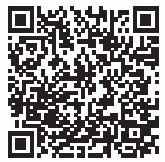Obstructive Sleep Apnea
OBJECTIVES
To review common causes of excessive daytime sleepiness.
To outline treatment strategies for obstructive sleep apnea.
To recognize common features of narcolepsy.
VIGNETTE
A 71-year-old man with history of chronic obstructive pulmonary disease (COPD), atrial fibrillation, internal carotid artery stenosis, transient ischemic attacks (TIAs), secondary polycythemia, and essential tremor was evaluated because of excessive snoring. The interview was conducted after the patient had received treatment for the underlying condition.
 |
Our patient presented with excessive daytime sleepiness. Other than hypothyroidism, overmedication, metabolic encephalopathy, and depression, the patient should be evaluated for a sleep disorder. Sleep disorders are prevalent and underrecognized, have costly implications, and can be very serious. Fortunately, sleep disorders are very treatable. For example, obstructive sleep apnea (OSA) is estimated to be more prevalent than asthma. In 1990 in the United States, there were 200,000 motor vehicle accidents as a result of falling asleep at the wheel. Approximately 31% of all drivers have fallen asleep at the wheel at least once in their lifetime. Nearly one-third of all heavy trucking accidents in which the driver is injured are due to the driver falling asleep at the wheel. A number of major industrial catastrophes,
including the Exxon Valdez, Three Mile Island, and Chernobyl, have been associated with sleepiness-related errors in judgment or performance in the workplace.
including the Exxon Valdez, Three Mile Island, and Chernobyl, have been associated with sleepiness-related errors in judgment or performance in the workplace.
The United States National Highway Traffic Safety Administration cites drowsiness as a cause of 108,000 police-reported crashes annually involving 76,000 injuries and 1,500 deaths. Thirty million Americans are estimated to suffer from chronic sleep disorders, of which 95% are considered to be underdiagnosed and untreated. In addition, another 20 or 30 million Americans are estimated to experience sleep-associated problems. A survey in 1990 suggested the direct cost of sleepiness and sleep disorders to the American public was $16 billion with indirect costs of $160 billion.
Stay updated, free articles. Join our Telegram channel

Full access? Get Clinical Tree








